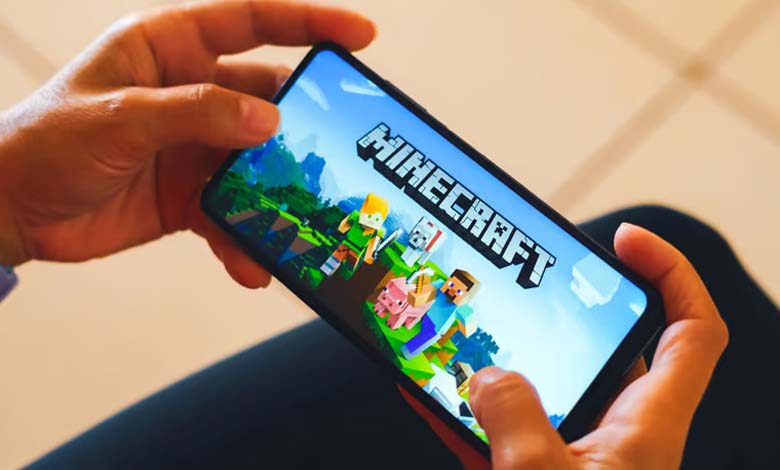What Is the Psychological Reason Behind Children’s Addiction to Minecraft?

Minecraft is widely regarded as one of the most successful and popular video games in history, with a massive global following that spans multiple generations. First released in 2009 by Mojang Studios, the game has grown into an entertainment phenomenon, with more than 300 million copies sold by 2023. Its influence extends far beyond the gaming community, creating an entire culture that has sparked a wide range of spin-offs, merchandise, online communities, and fan-created content. In fact, the game’s remarkable popularity has led to the production of a highly anticipated Hollywood adaptation titled Minecraft: The Movie, which is set to star Jack Black and Jason Momoa. Scheduled for release in April 2025, this film is expected to draw even more attention to the game and expand its already widespread reach.
-
Study: Teenagers’ Excessive Video Game Use Raises Anxiety Disorders
-
10 Essential Tips for Ensuring Your Child’s Safety on Gaming Platforms
In addition to Minecraft, similar sandbox games like Roblox and Terraria also attract millions of players worldwide, offering open-ended gameplay experiences that allow users to create, explore, and interact in virtual worlds. However, Minecraft seems to stand out as a particularly powerful draw for players of all ages, especially children. While the game appeals to a broad demographic that includes teenagers, young adults, and even seasoned gamers, it is especially captivating for younger players. This widespread popularity among children is no small feat, particularly in an age where digital distractions and competing entertainment options are everywhere. It’s not uncommon for children to spend hours upon hours immersed in the game, building elaborate structures, exploring vast virtual landscapes, or surviving against an array of in-game threats.
-
“Concerning” Effects of Electronic Devices on Children’s Mental Health
-
Saudi Arabia Plans to Build the World’s First Dragon Ball Theme Park
This unique ability to hold children’s attention for such extended periods has understandably sparked concern among many parents. Some worry that their children’s intense fascination with Minecraft could develop into an unhealthy obsession, or worse, an addiction. In a world where technology has become ubiquitous and online content is ever-growing, it can be difficult for parents to find a balance between allowing their children to enjoy the game and ensuring that they do not lose touch with the physical world. As they struggle to pull their children away from their screens, many parents are left questioning how much screen time is appropriate and how to establish healthy boundaries when it comes to gaming.
Deep Psychological Factors at Play
So, what is it about Minecraft that makes it so appealing to children—and why does it have such a lasting grip on them? Experts suggest that Minecraft’s success, much like that of other sandbox-style games, can be explained by several deep psychological mechanisms that align with fundamental human instincts. At its core, the game taps into a powerful and universal urge: the desire to build. For generations, children have engaged in various forms of creative play that involve construction. Whether it’s building sandcastles on the beach, assembling treehouses in the backyard, creating forts out of pillows and blankets, or stacking wooden blocks to form towers, children have always enjoyed crafting physical structures.
Minecraft offers a digital environment where this instinct to build is not only encouraged but also fully realized. With its vast array of materials, tools, and the freedom to design anything from simple homes to massive fortresses, the game provides children with an unlimited creative outlet. In many ways, it can be viewed as a modern, digital evolution of traditional forms of construction play, offering a new medium where the imagination can flourish without any of the physical limitations that come with real-world materials.
-
Babies need humans – No screen before the age of two
-
Microsoft is testing the use of the Xbox app on smartphones without a controller
In addition to creativity, Minecraft also seems to stimulate the human survival instinct. This deeply rooted trait in humans involves the need to create shelters, tools, and weapons in order to survive in the environment. Whether it’s building a mud hut to protect against the elements or crafting primitive hunting weapons to defend oneself, the survival instinct has been ingrained in human behavior for millennia. In Minecraft, players engage in activities that mirror this survival drive—such as gathering resources, constructing shelters, and crafting tools and weapons to defend against hostile mobs. This element of the game, especially in survival mode, taps into the same psychological mechanisms that our ancestors relied upon for survival.
For children, this play is more than just a form of entertainment; it serves as a developmental tool, helping them understand the importance of planning, problem-solving, and resource management. Furthermore, this form of imaginative play prepares them for adulthood by fostering skills such as cooperation, strategy, and critical thinking. Minecraft, with its open-ended gameplay, offers an environment in which children can develop these essential skills while having fun and engaging with their peers.
Another key component of Minecraft’s appeal lies in its blend of creative freedom and competitive challenges. The game’s survival mode presents players with obstacles that require them to battle enemies and overcome environmental challenges, adding a layer of competition and adventure to the experience. Players are not only tasked with building and creating but also with surviving against aggressive mobs and navigating dangerous landscapes. This mixture of creation and competition is particularly compelling, as it appeals to both the natural desire for self-expression and the human love of challenge.
While creativity and survival may explain why Minecraft is so engaging, they don’t fully account for why children become so absorbed in the game. The social aspect of Minecraft also plays a significant role. With multiplayer functionality, children can interact with friends, form virtual communities, and even create their own collaborative worlds. This social element allows children to connect with others who share similar interests, making Minecraft not only a solo activity but also a shared social experience.
Balancing Screen Time
Of course, the amount of time children spend playing Minecraft raises important concerns regarding screen time management. With the growing prevalence of digital devices, video games, and social media, it’s crucial to strike a balance between online engagement and offline activities. Excessive gaming, particularly when it becomes a daily routine, can contribute to negative outcomes such as decreased physical activity, poor sleep, and limited face-to-face social interactions. These effects can be detrimental to a child’s overall development, both physically and emotionally.
As Minecraft continues to dominate the gaming landscape, it is essential for parents, caregivers, and educators to understand the psychological factors that make the game so captivating, while also being mindful of how much time children spend in the game world. Encouraging children to balance their gaming activities with other important aspects of life, such as schoolwork, family time, physical activity, and outdoor play, can help ensure that their love for Minecraft doesn’t come at the expense of their well-being.
-
Benefits and Risks: How Artificial Intelligence Affects Children
-
School or Parents… Who is Responsible for Protecting Children from Social Media?
Ultimately, Minecraft represents a modern digital playground where children can explore their creativity, test their survival instincts, and develop valuable life skills. However, like any form of entertainment, it’s important to approach it with moderation and awareness, ensuring that children enjoy the benefits of the game while maintaining a healthy balance in their lives. By fostering an environment of responsible gaming, parents can help children make the most of their Minecraft experience without letting it take over their lives.












